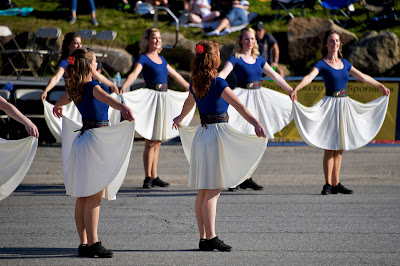Mark Guerringue sits in the left chair for this show. We immediately address the producer's first question: "If President Trump withheld military aid to Ukraine as a means of pressuring them to dig up dirt on Joe Biden's son, should he be impeached?"
Mark says Trump and Giuliani have already admitted it, that's an impeachable offense, and Pelosi had no choice. (I should mention that the transcript of the call hadn't been released at this point in the show).
We compare Trump's possible impeachment with Clinton's impeachment, the process as it was begun under Nixon, and could have been under Reagan after the Iran-Contra scandal. We agree that's it's both a political process and a legal one, but mostly a political one.
We discuss how the Clinton impeachment backfired on the Republicans and speculated about how it could backfire against Democrats if they should proceed against Trump.
While we're talking, the producer brings us print-outs of the whistleblower's transcript just being released. Mark reads it and there's some damning stuff, but no smoking gun. Then again, it's only a few pages of a larger transcript.
Mark pivots to the Democrat primaries saying Elizabeth Warren is catching fire, while Bernie is sinking. I refer to that morning's proposal of a "wealth registry" by Bernie to one-up Warren's proposed "Wealth Tax" of taking 2% of the total assets of wealthy people annually. Bernie now wants to freeze their assets and take even more.
I bring up a transcript of a staff meeting in the New York Times last month in which its editor acknowledges how his paper geared up to cover the "Russian Collusion" story which went bust and how disappointed NYT readers were that Trump was still standing. Then the editor said he was gearing up to cover Trump and racism until the 2020 election. I said it was an example of the NYT and other leftist mainstream media orchestrating stories and narratives.
Mark said it was all okay and that's the way newspapers should operate. I said, "Okaaaay..."
Lastly, he brought up the continuing, extensive coverage of a duck killing by some football players at Kennett High School. I said I was amazed that it got so much attention. "I mean, it's a duck," I said. Mark said it was more the reaction of the community that the coach and other school officials should have handed down worse penalties than a three or four-game suspension. He asked me if I agreed. I said I agreed with the coach.



























